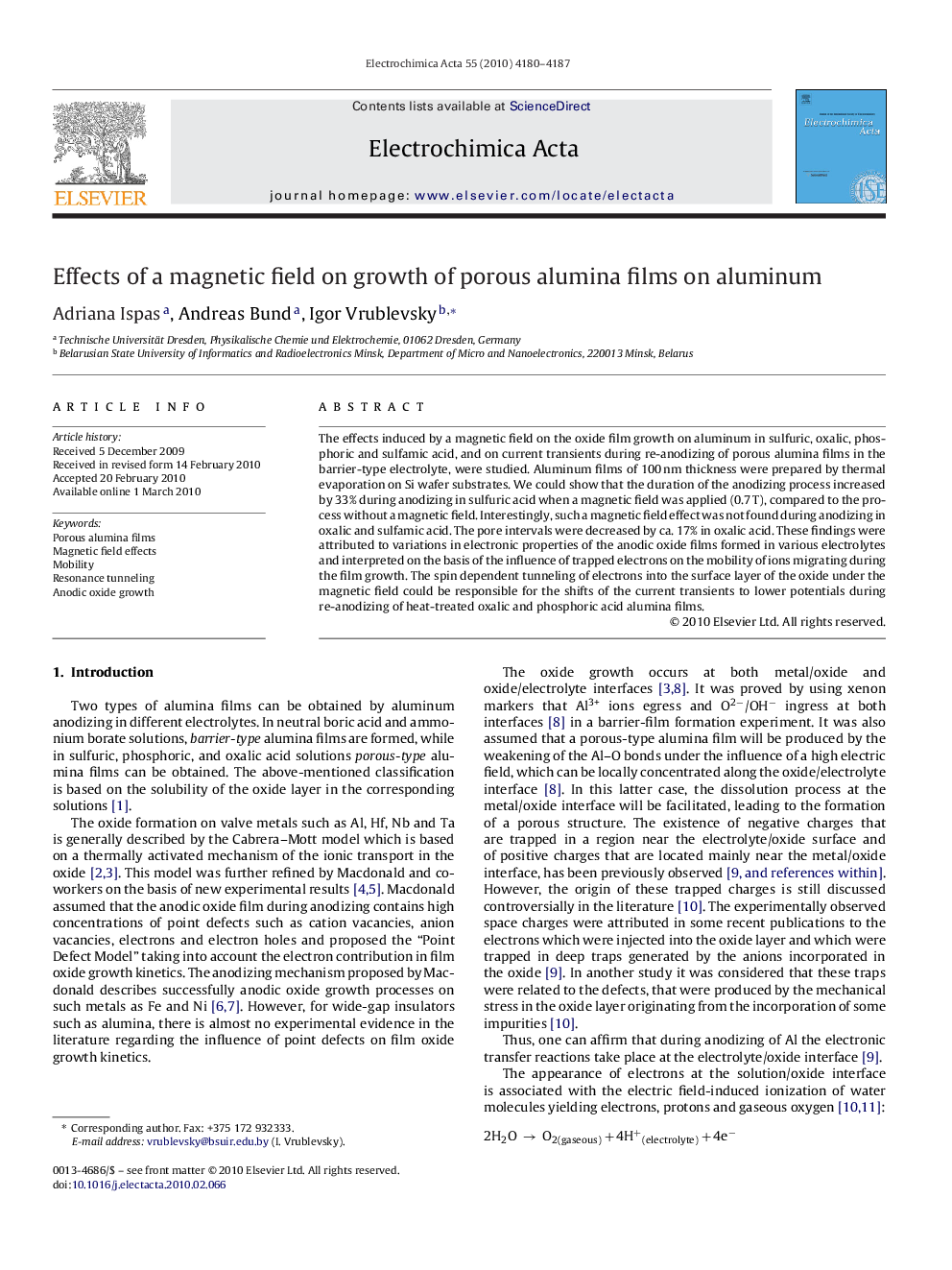| Article ID | Journal | Published Year | Pages | File Type |
|---|---|---|---|---|
| 191319 | Electrochimica Acta | 2010 | 8 Pages |
The effects induced by a magnetic field on the oxide film growth on aluminum in sulfuric, oxalic, phosphoric and sulfamic acid, and on current transients during re-anodizing of porous alumina films in the barrier-type electrolyte, were studied. Aluminum films of 100 nm thickness were prepared by thermal evaporation on Si wafer substrates. We could show that the duration of the anodizing process increased by 33% during anodizing in sulfuric acid when a magnetic field was applied (0.7 T), compared to the process without a magnetic field. Interestingly, such a magnetic field effect was not found during anodizing in oxalic and sulfamic acid. The pore intervals were decreased by ca. 17% in oxalic acid. These findings were attributed to variations in electronic properties of the anodic oxide films formed in various electrolytes and interpreted on the basis of the influence of trapped electrons on the mobility of ions migrating during the film growth. The spin dependent tunneling of electrons into the surface layer of the oxide under the magnetic field could be responsible for the shifts of the current transients to lower potentials during re-anodizing of heat-treated oxalic and phosphoric acid alumina films.
